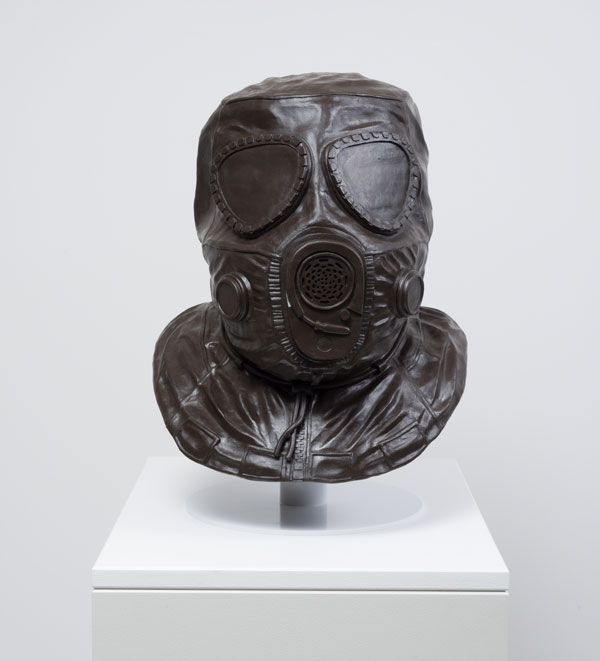The Metropolitan Museum of Art’s Permanent Collection of Arms and Armor is one of the most encyclopedic in the world. Not only does it house more than 14,000 objects that range from the Fifth through the 19th century, but it’s the Museum’s most visited gallery with its arsenal of weaponry and armor, appreciated for their intricate design and craftsmanship.
Another reason for this collection’s sustained popularity is due to its ability to provide a sense of reassurance and wellbeing. Like similar collections, it functions as a protective agent, suggesting that we have evolved from barbarous forms of combat and killing. In his fourth solo show at L.A. Louver, “Reign of Fire,” the Los Angeles-based sculptor Ben Jackel challenges this notion by intermingling recreated arms, tools and watercraft from both the past and the present.
Comprising 26 sculptures, the bulk of the exhibition spans three rooms on the gallery’s first floor. In one, viewers are met with a grouping of eight canons made of stoneware. Varying in length from 19 to 130 inches, each assume a weathered exterior reminiscent of the worn and rusted metal weaponry one might find at an excavated military fort.
Also on view is an assortment of five similarly weathered galleons, the longest measuring almost two feet. Made of stoneware, ebony and copper, these works are mounted in such a way that they appear to be sailing up the wall, as if on a mission, with their hulls pointing up, towards the ceiling. Interestingly, these sculptures come with a historical reference that links each to war in one form or another. Take Pilar (2017), a facsimile of Ernest Hemingway’s fishing boat. Not only did it inspire For Whom the Bell Tolls, but it was also used during WWII to search for German U-boats in the Caribbean.
The room also presents three hanging drones made from wood and burnished graphite. Juxtaposed against Jackel’s cannons and ships, they make a bold statement about war and mankind’s continued efforts to create increasingly destructive weaponry which, in turn, have made us less aware and even immune to the devastation they impose.
In the gallery’s middle room, a handful of oversized military helmets sit atop white pedestals. While three look like artifacts from the 15th and 16th centuries, Gas Mask (2016) implies civilization’s cunning development of even more lethal forms of extinction. Like Otto Dix’s monumental portfolio Der Krieg (The War), this piece vividly captures the heightened sense of atrocity that came with the introduction of chemical warfare during WWI.
At the center of the room stands a bust of Theodore Roosevelt. Unlike most of Jackel’s works on view, the surface of TR, Teddy Roosevelt (2017) assumes a much more organic and transient texture, like wet clay. This 43-inch-tall likeness of our 26th president, who played a pivotal role in establishing the United States as a global power, is counterpoised by Dark Tower (2017), a representation of Trump Tower that leaves us to ponder whether today’s political climate will render us as another failed civilization, corrupted by our own ambitions and reckless leadership.



